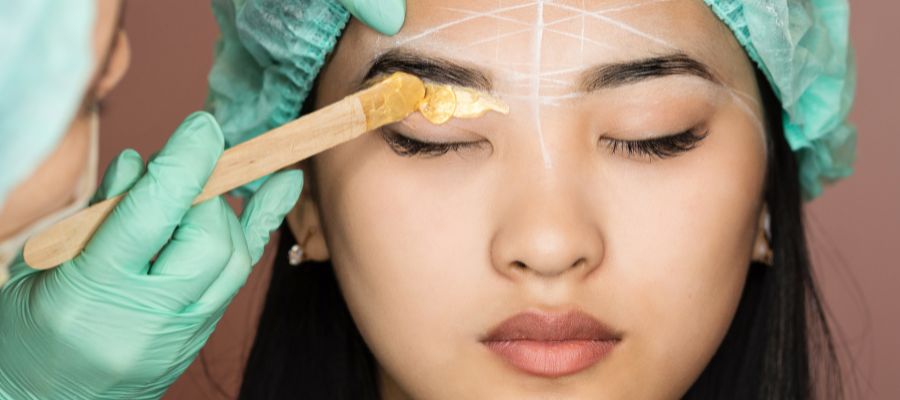Eyebrow waxing is a popular method of grooming and shaping eyebrows. It involves the use of hot or cold wax to remove excess eyebrow hair and achieve a desired brow shape. When performed correctly, waxing can provide longer-lasting results compared to other methods, like tweezing or threading.
In this comprehensive guide, we’ll take you through everything you need to know about eyebrow waxing – from preparation to post-wax care.
The History and Purpose of Eyebrow Waxing
Eyebrow waxing has a rich history, tracing back to ancient civilizations where the idea of grooming and beauty rituals was born. The purpose of eyebrow waxing is to provide a cleaner, more defined look to the face. Shaped eyebrows can enhance facial features and give a well-groomed appearance.
The Benefits of Eyebrow Waxing
Eyebrow waxing provides a myriad of benefits, such as:
Long-lasting Results
Eyebrow waxing can last up to 6 weeks, depending on individual hair growth cycles. This is significantly longer compared to other methods like tweezing or threading.
Cleaner Look
Waxing provides a cleaner, more defined look as it removes hair from the root.
Slower and Finer Regrowth
Over time, regular waxing can result in slower and finer hair regrowth.
How to Prepare for Eyebrow Waxing
Before you dive into the world of eyebrow waxing, there are a few preparation steps to ensure a smoother process:
- Skin Cleansing: Cleanse the eyebrow area to remove any makeup or oils.
- Avoid Retinoid Creams: If you use retinoid creams, stop usage at least a week before waxing to avoid skin sensitivity.
- Let Your Eyebrows Grow: For best results, allow your eyebrows to grow out for a few weeks before waxing. This allows the wax to adhere to the hair properly.
Types of Eyebrow Waxing
There are two main types of eyebrow waxing techniques – hot wax and cold wax.
Hot Wax
Hot wax is applied to the skin, allowed to cool, and then removed, pulling the hair out from the roots.
Cold Wax
Cold wax strips come pre-coated with wax. They’re pressed onto the skin and quickly removed, taking the hair with them.
Both techniques have their benefits and drawbacks, but the choice typically comes down to personal preference and skin sensitivity.
Eyebrow Waxing Procedure
Whether at a salon or at home, the eyebrow waxing procedure generally follows the same steps:
- Cleanse the area
- Apply pre-wax cleanser
- Apply the wax in the direction of hair growth
- Place a wax strip over the wax
- Pull off the strip against the direction of hair growth
- Apply post-wax lotion to soothe the skin
DIY Eyebrow Waxing: Home Kits
While professional waxing at a salon is a common choice, DIY eyebrow waxing at home is also an option. Many at-home eyebrow waxing kits are available on the market, offering different types of waxes (hot or cold), pre-and post-wax treatments, and often, detailed instructions.
Before embarking on DIY eyebrow waxing, make sure to read the instructions thoroughly, do a patch test to avoid any adverse skin reactions, and start slow.
Post-Waxing Care
After waxing, your skin may be a little red or sensitive. Here are some tips for post-waxing care:
- Avoid touching the waxed area to prevent irritation or breakouts
- Apply a soothing aloe vera gel or post-wax lotion to calm the skin
- Avoid sun exposure, tanning beds, hot showers, and saunas for at least 24 hours
Eyebrow Waxing vs. Other Methods
Eyebrow waxing stands as a popular choice for many due to its long-lasting results. In comparison, tweezing can be time-consuming, and while threading can achieve precise results, it can also be painful. Ultimately, the choice between waxing, threading, and tweezing comes down to personal preference, pain tolerance, and desired results.
FAQ on Eyebrow Waxing
How Often Should I Wax My Eyebrows?
Generally, eyebrows should be waxed every 4 to 6 weeks, depending on your hair growth cycle.
Does Eyebrow Wax Hurt?
You might feel a quick, stinging sensation when the wax strip is removed, but this is brief.
How Can I Reduce Redness After Eyebrow Waxing?
You can apply a cold compress or a soothing aloe vera gel to the area. Avoid direct sunlight and heat, as these can exacerbate the redness.
Conclusion
Remember, whether you’re opting for DIY eyebrow waxing or heading to a salon, understanding the process and knowing what to expect can help you achieve your desired eyebrow shape and style with less hassle and discomfort.
